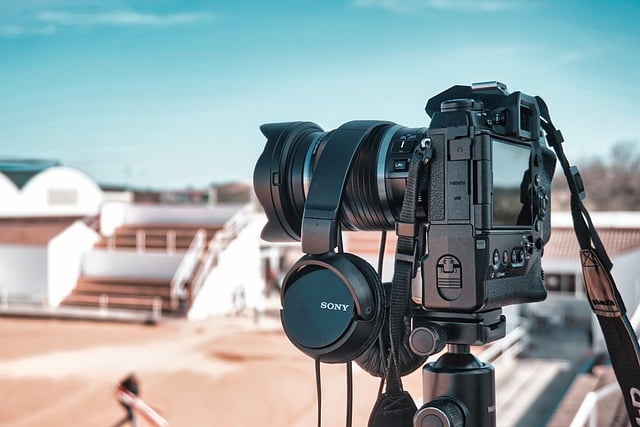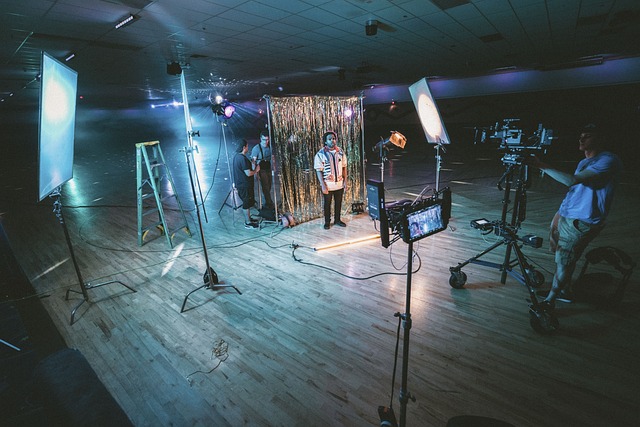Easily play DivX videos on Android TVs thanks to native support and compatible apps, ensuring high-quality playback with efficient file sizes. To set up, update your device, install the official DivX app from Google Play Store, enable hardware acceleration, connect to local network, and enjoy optimized encoding/decoding with H.264/H.265 codecs at appropriate bit rates for your network speed, in 1080p or 4K resolution, using AAC audio formats.
“Discover the power of DivX—a versatile codec that optimizes video encoding and decoding, ensuring seamless playback. This article guides you through mastering DivX, from its fundamentals to advanced usage. Learn why it’s a top choice for efficient video management. We’ll walk you through setting up Play DivX on your Android TV with an easy step-by-step guide. Additionally, explore best practices to achieve optimal performance and enjoy high-quality videos without hassle.”
Understanding DivX: A Brief Overview

DivX is a video coding and decoding technology known for its efficiency and compatibility across various devices, including Android TVs. It’s designed to provide high-quality video playback while minimizing file sizes, making it ideal for streaming content over limited bandwidth connections. This versatility has made DivX a popular choice for encoding and decoding videos for years.
With the rise of Android TV as a smart home entertainment hub, playing DivX files on these devices has become more accessible than ever. Many modern Android TVs support DivX codecs out-of-the-box, allowing users to enjoy their favorite videos without any additional configuration. For those that don’t, there are simple solutions available, such as installing official DivX apps or utilizing compatible media players capable of handling DivX streams, ensuring a seamless experience when watching videos in this format on Android TV.
Advantages of Using DivX for Video Encoding and Decoding

DivX offers several advantages for video encoding and decoding, making it a popular choice among users looking to efficiently manage their media content. One of its key strengths is compatibility; DivX codecs are supported on various platforms, including Android TV devices, allowing users to seamlessly play DivX videos on their smart TVs without any issues. This accessibility ensures that you can enjoy your favourite encoded videos across different devices and operating systems.
Additionally, the DivX format provides high-quality video playback with efficient compression rates, enabling smaller file sizes without sacrificing visual clarity. This is particularly beneficial for streaming or transferring videos to mobile devices. With DivX, users can expect a smooth and immersive viewing experience, ensuring that both original content creators and consumers benefit from its advanced encoding capabilities, especially when considering the growing demand for on-demand video streaming on modern entertainment systems like Android TV.
Setting Up Play DivX on Android TV: Step-by-Step Guide

To set up Play DivX on your Android TV, follow this straightforward step-by-step guide. Begin by ensuring your device is updated to the latest Android version and has a stable internet connection. Next, download the official DivX app from the Google Play Store. Install the app and launch it on your Android TV. Upon opening, you’ll be prompted to accept the app’s permissions. Grant these permissions to ensure smooth functionality.
Once installed, access the app’s settings and enable hardware acceleration if available. This optimization will significantly enhance video playback performance. Now, locate and select the ‘Local Media’ or ‘Media Server’ option within the app. Follow the on-screen instructions to connect to your local network and access your media files. With these steps completed, you’re ready to enjoy efficient encoding and decoding of videos directly on your Android TV.
Best Practices and Tips for Optimal Performance

To achieve optimal performance when encoding and decoding videos, especially for seamless Play DivX on Android TV, follow these best practices. First, select a high-quality video codec like H.264 or H.265 (HEVC) that strikes a balance between file size and visual quality. This ensures the video retains its crispness while being small enough to stream smoothly. Additionally, use suitable bit rates tailored to your network speed; higher speeds allow for better quality but require more bandwidth.
Next, consider aspect ratio and resolution. Choose formats like 1080p or 4K based on your TV’s capabilities, ensuring the video fills the screen without distortion. Downscaling or upscaling can impact performance, so match the resolution as closely as possible to your display. Lastly, optimize audio by encoding in lossless formats like AAC when possible and matching the sample rate to your TV’s audio capabilities for the best audio experience while playing DivX videos on Android TV.
DivX has established itself as a powerful codec, offering efficient video encoding and decoding solutions. Its advantages include high-quality video output with smaller file sizes, making it ideal for streaming. The step-by-step guide provided ensures a seamless setup of DivX on Android TV, allowing users to enjoy their media library without hassle. By following best practices, you can optimize performance and take full advantage of this game-changer codec, especially when it comes to navigating the labyrinthine world of video formats.
